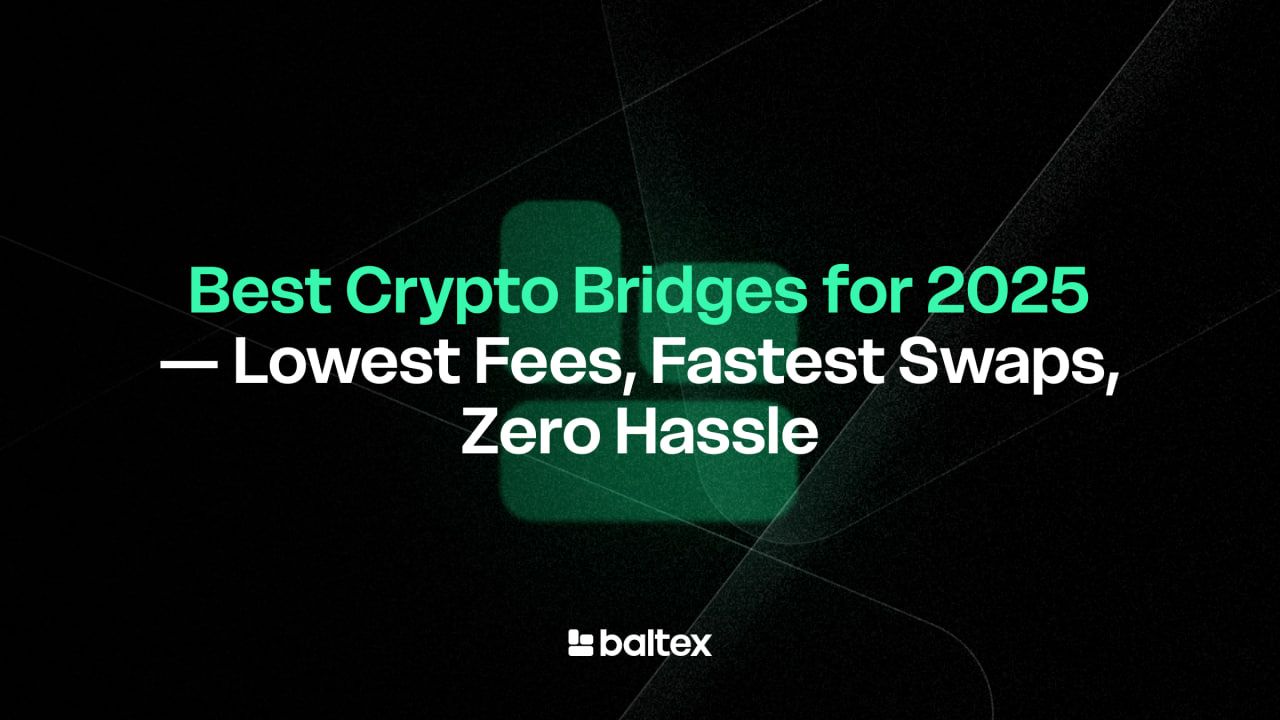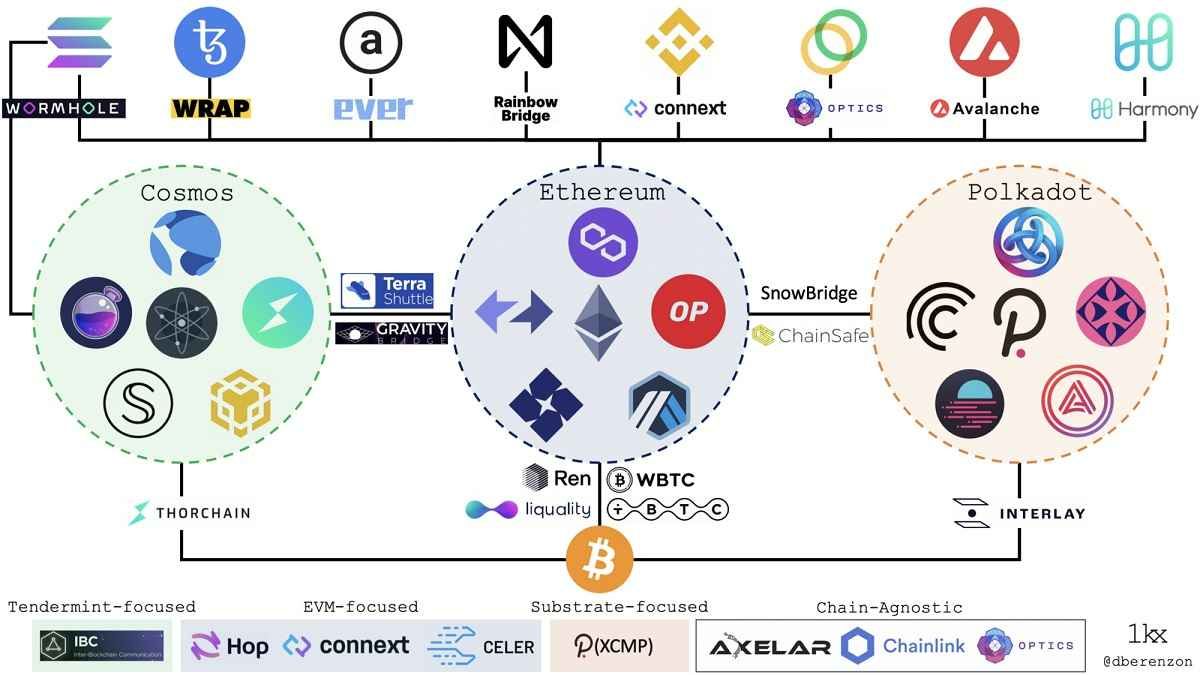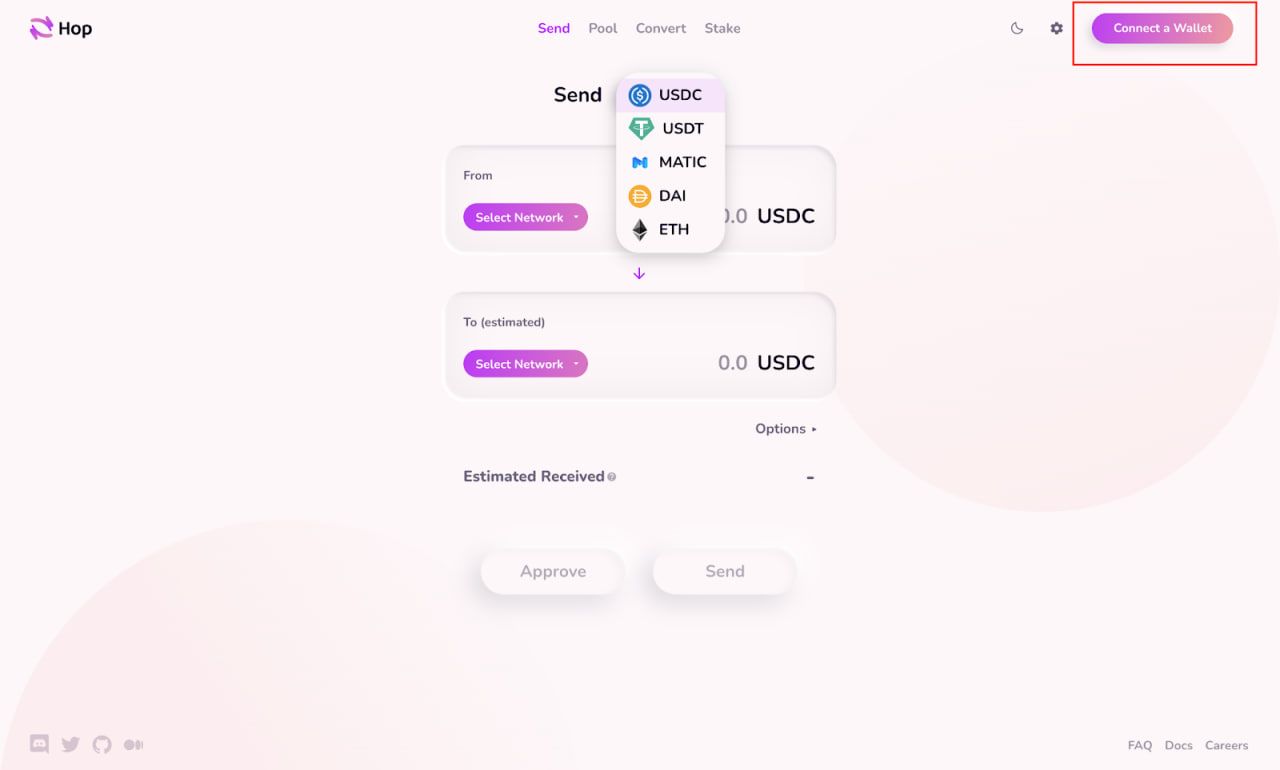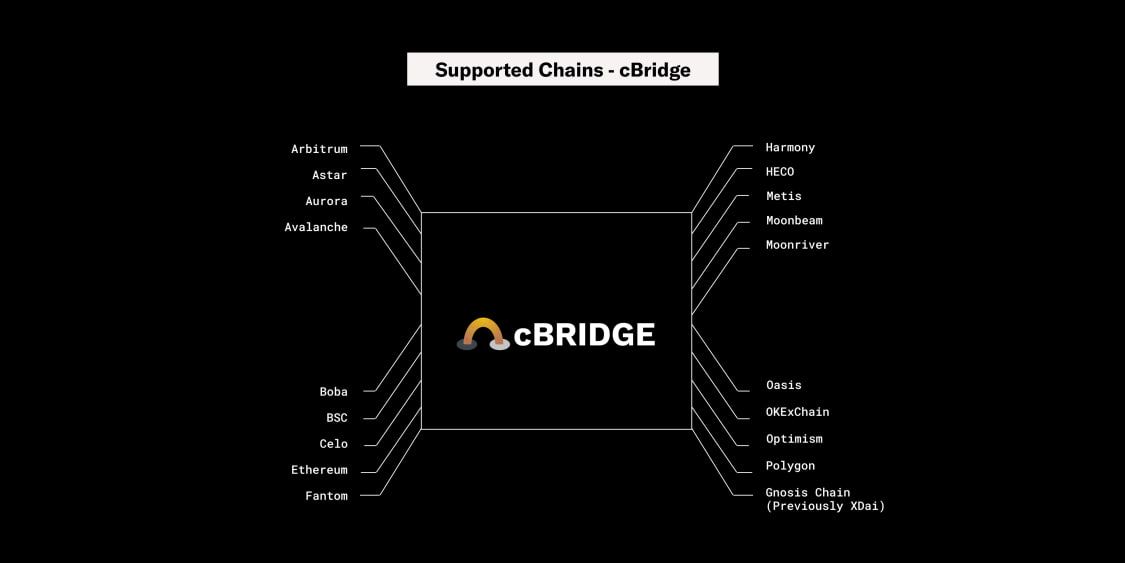
If you’re diving into DeFi or swapping assets across different networks, you’re likely on the lookout for the best crypto bridges 2025 has to offer. The right bridge can help you move tokens quickly, pay lower fees, and avoid the stress of complicated cross-chain transactions. This guide highlights the top platforms you’ll want to keep on your radar, so you can boost your cross-chain swaps and make the most of new opportunities at every turn.
Crypto bridges let you transfer tokens between different blockchains without having to cash out.
Platforms differ by fees, speed, security, and supported token types.
baltex.io offers zero-commission swaps, making it attractive for cost-conscious traders.
Some bridges rely on lock-and-mint mechanisms, while others use liquidity pools.
The best strategy involves picking a bridge that balances speed, reliability, and safety.
A crypto bridge is a framework that allows you to move digital assets from one blockchain to another without relying on centralized exchanges. It often includes a combination of smart contracts, liquidity networks, and sometimes specialized nodes that help finalize transactions on each network. Think of a crypto bridge as a bilingual translator, aligning different blockchain languages so you can swap tokens freely.
When you choose a crypto bridge, you typically lock or send your tokens on the source chain. The bridging service then either mints or releases equivalent tokens on the destination chain. Once the transaction is completed, you can use your newly bridged assets just like you would any native token on that chain.
Beyond simple asset movement, bridges also enable:
Yield farming on multiple networks, so you can chase higher returns in new liquidity pools.
Cost savings if the destination chain has cheaper transaction fees than your current chain.
Access to dApps that might only operate on a specific network.
Some bridges rely on established protocols that have been around for years, while others are more recent, boasting faster or cheaper solutions. Ultimately, the goal is to give you more options for how and where you manage your crypto portfolio.
If you’re primarily active on one chain, it’s easy to overlook the advantages of bridging. However, many crypto users eventually realize they can optimize yields, reduce transaction expenses, or simply explore new ecosystems by bridging tokens. Here’s why bridging can be a game changer:
Lower fees: Ethereum gas fees can be expensive, especially during peak market events. By bridging to a lower-fee chain, you can significantly reduce your per-transaction costs.
Wider investment choices: Not all tokens are native to every chain, and bridging helps you access assets that are otherwise locked to certain networks.
Faster settlement: Some Layer 2 networks or sidechains process transactions faster than older networks. Bridging can help you secure quicker confirmations.
Diversified risk: Holding assets on multiple chains spreads your overall risk in case of congestion or network downtime on one particular chain.
For traders who frequently jump in and out of positions, bridging can be the key to always finding the best yield or the most efficient trades. And as new chains gain traction, bridging helps you move your capital to whichever network emerges as the next major hub of crypto activity.
baltex.io is often praised for zero-commission swaps, making it one of the most cost-friendly solutions you can explore. If you hate seeing your transaction fees eat into your profits, then baltex.io’s fee structure might be a breath of fresh air. As of 2025, this platform has refined its bridging process to be straightforward and fast.
Because they don’t charge a commission, your transaction cost mostly comes down to underlying network fees. For example, you’ll still need to pay gas for the source and destination blockchains, but baltex.io won’t tack on extra fees. In terms of speed, many swaps finalize within minutes, thanks to a robust liquidity pool design.
baltex.io supports a range of networks, from major Layer 1 chains to popular Layer 2 solutions. You can typically move stablecoins, ETH, or tokens that run on EVM-compatible chains without fuss.
Zero-commission swaps help you keep more of your funds.
Clear, user-friendly interface that caters to all experience levels.
Fast transaction settlement, so you’re not waiting around for confirmations.
If your top priority is making the most of tight spreads and minimal fees, baltex.io stands out as a go-to platform. It’s also a good fit for serious traders who bridge assets multiple times a day. By cutting out extra fees, baltex.io makes frequent bridging less of a drain on your returns.
MultiChain has been around for a while in various forms. Its current iteration focuses on cross-chain functionality for a variety of networks. This bridge supports not just Ethereum-based assets but also a collection of non-EVM-compatible blockchains, giving it a broad user base.
MultiChain transactions can be fast, typically completing in under 10 minutes, although exact times vary based on network congestion. Fees are somewhat moderate. You’ll be charged gas fees plus a small bridging fee that can fluctuate. The benefit here is that MultiChain’s stable infrastructure results in fewer transaction failures.

If your portfolio spans multiple ecosystems, MultiChain might serve as a one-stop solution. It supports Ethereum, Binance Smart Chain, Fantom, Polygon, and many more. This wide range is a big selling point because you’re less likely to juggle multiple bridges for different tokens.
Extensive network support, making it ideal for well-diversified traders.
Reliable, stable bridging process that helps avoid transaction errors.
Easy interface with advanced options for power users.
MultiChain has earned a reputation as a workhorse. You might not get the absolute lowest bridging fees when compared to zero-commission platforms, but stability and wide coverage can be worth it.
Hop Protocol is designed primarily for Layer 2 bridging. If you’re interested in moving assets quickly between Ethereum, Optimism, Arbitrum, and other Layer 2 solutions, Hop Protocol can help you dodge the high gas fees of mainnet Ethereum.
Transactions can settle in minutes, especially if you’re sending from one Layer 2 network to another. Fees are determined by demand on each Layer 2 chain, but you’ll often find them cheaper than mainnet Ethereum. If your goal is to remain in a lower-fee environment, Hop Protocol helps keep you there without returning to an expensive base layer.
Hop Protocol is specifically geared toward an ecosystem of Layer 2 networks, though it also accommodates the Ethereum mainnet. It’s well-suited if you’re gravitating toward Arbitrum, Optimism, or other expansions of Ethereum’s ecosystem.

Efficient for frequent L2-to-L2 swaps.
Minimal bridging times, boosting your trading speed.
Familiar interface if you’re used to Ethereum-based tools.
For anybody primarily on Ethereum Layer 2 solutions, Hop Protocol can be a lifesaver. You can move capital between these networks without paying the higher fees of going back through Ethereum mainnet each time.
Wormhole is a cross-chain messaging protocol that also includes token bridging. Originally focused on connecting Ethereum and Solana, it has since branched out to include other networks.
Bridging speeds vary based on the specific networks you’re connecting. Solana, for instance, handles transactions in just a few seconds. Ethereum confirmations can take longer. Fees can also differ among the paired networks, so you’ll want to monitor gas costs. Unlike zero-commission platforms, Wormhole does add a fee for bridging, but many users consider it fair given its robust network coverage.
Wormhole has expanded from its early focus on Ethereum-Solana. Now it encompasses multiple blockchains, such as BNB Chain, Polygon, and others. This flexibility makes it a good hub for bridging if you hold Solana-based assets or tokens from smaller networks.
Excellent if you’re bridging between Solana and Ethereum.
Constantly evolving, with additional networks and features in the pipeline.
Strong emphasis on security, having undergone rigorous audits.
Wormhole is a solid bridge if you have any intention of tapping into Solana’s high-speed ecosystem. By linking to several EVM-compatible chains as well as more unique networks, Wormhole solves a niche problem for bridging across drastically different ecosystems.
AnySwap was among the early pioneers of cross-chain functionality. It has rebranded and expanded its services, but many users still remember it for bridging stablecoins across Ethereum, Binance Smart Chain, and a handful of other networks.
AnySwap’s efficiency comes from its large liquidity pools that facilitate on-demand transactions. Speed typically depends on the block times of the underlying networks. For instance, bridging between Ethereum and Polygon might finalize in 2 to 5 minutes if the transaction is placed during a low-traffic period. Fees are moderate, and you’ll pay gas plus a variable bridging fee.
One of AnySwap’s strongest features is its broad compatibility. Whether it’s Ethereum-like networks, smaller chains, or newly emerging ecosystems, AnySwap aims to support them. This flexibility makes it appealing if you frequently experiment with lesser-known tokens or smaller DeFi projects.
Deep liquidity for popular token pairs, reducing slippage.
Long track record, which can boost user confidence.
Continual updates that add more chains and tokens.
AnySwap is great if your strategy involves many tokens that might not appear on major bridges. Its wide coverage, combined with decent speed, makes it a reliable workhorse for cross-chain trading.
cBridge is an offering by Celer Network. It focuses on fast, low-cost transfers across a variety of EVM-compatible blockchains and Layer 2 solutions. Its architecture uses specialized liquidity clusters to speed up user transactions.
cBridge typically processes transactions almost instantly on less congested networks. Even if traffic spikes, cBridge has a reputation for staying reliable. The fees are generally low, mostly to cover gas and a small liquidity provider charge. For traders who value speed, cBridge often becomes a go-to option because of how efficiently it finalizes cross-chain swaps.

cBridge supports Ethereum, BNB Chain, Polygon, Arbitrum, and several other EVM-based networks. Over time, the team has expanded coverage to new blockchains, aiming to capture the entire DeFi spectrum.
Emphasis on quick transfers, ideal if you trade rapidly.
Clear tutorial guides that help you set up your cross-chain swaps.
Backed by Celer Network’s experience in Layer 2 scaling solutions.
If you’re often frustrated by bridging delays, cBridge’s streamlined approach can be a huge relief. It’s particularly favored by traders who layer strategies across multiple EVM-compatible chains looking for faster yield or arbitrage opportunities.
PolkaBridge started as a solution for bridging between Polkadot and Ethereum, but it has grown into a multi-chain platform. It appeals to users who want exposure to both substrate-based chains and more traditional EVM networks.
Thanks to Polkadot’s efficient architecture, PolkaBridge can process transactions swiftly, often in just a few minutes. Fees generally align with other bridging services, covering basic gas costs plus a small bridging charge. Because of its Polkadot integration, PolkaBridge might be your best friend if you’re already active on parachains within that ecosystem.
Polkadot, Ethereum, and their affiliated chains sit at the center of PolkaBridge’s coverage. It has also expanded to other networks, aiming to make cross-chain swaps less of a chore for anyone invested in Dot-based ecosystems.
Specialized solution for bridging Polkadot-based assets.
Smooth user interface that simplifies cross-chain transactions.
A dedicated community that can help newcomers learn the ropes of bridging.
If you believe in the future of Polkadot or hold a portfolio that includes Dot-based tokens, having PolkaBridge as part of your toolkit could streamline your cross-chain strategies.
Once you’ve seen what each platform can do, how do you decide which one best serves your needs? Here are some crucial points to keep in mind:
Fees High bridging charges can eat away at your returns. Zero-commission or low-fee solutions are worth a closer look, especially if you transfer assets frequently. Always account for network gas costs when you calculate your total expenses.
Speed Some bridges finalize transactions almost instantly, while others might take 10 to 30 minutes. If you’re in a hurry to catch a market opportunity, speed can be a top priority.
Security A secure bridge has robust smart contracts, responsible liquidity providers, and thorough audits. Look for well-vetted platforms, even if they cost slightly more. Sometimes cheaper bridges skimp on security.
Liquidity Bridges with larger liquidity pools can process bigger trades without generating large price slippage. If you plan on moving significant capital, choose a platform that can handle your transaction without delays.
User experience Bridging user interfaces differ widely. Some are intuitive and beginner-friendly, while others require a bit of technical know-how. If you’re new to cross-chain swaps, pick a bridge with clear documentation, tutorials, or step-by-step navigation.
Supported tokens and blockchains Double-check that the bridge supports all networks and token types that matter to you. If you’re exploring obscure chains, look for a wide-coverage platform like MultiChain or AnySwap.
Below is a simple comparison table to help you see how these bridges stack up on four common criteria: supported chains, typical fees, average bridging speed, and user experience.
Crypto bridges in 2025 are far more advanced than they were just a few years ago. Many use specialized smart contracts that minimize risk by never putting users’ funds in a single vulnerable spot. Liquidity pools are often spread out or guarded by multi-signature setups. This approach significantly reduces the chance that a single exploit will compromise all assets in the system.
Modern bridges also focus on:
Liquidity incentives: Platforms encourage users to contribute liquidity for bridging by offering staking rewards or revenue-sharing models. This ensures there’s always enough liquidity to handle user demand, keeping fees competitive and reducing slippage.
Off-chain validation: Some bridges incorporate trusted or partially decentralized off-chain oracles to validate transactions. As new oracles join, the protocol becomes more secure.
Multi-layer security checks: Leading platforms often require multiple confirmations on each side of the transaction before finalizing the bridge. This approach can reduce the likelihood of replay attacks or double spending.
When you’re assessing a modern bridge, check how they handle potential single points of failure, whether they have experienced audits, and how they manage liquidity. A little research goes a long way in steering you to a service that takes both your funds and your peace of mind seriously.
Below are some common questions traders ask before bridging assets. If you’re unsure about how bridging works or which service to choose, these answers might point you in a clearer direction.
They share similarities but serve different purposes. An exchange matches buyers and sellers, allowing you to trade one token for another (often drawing liquidity from an order book). A bridge, on the other hand, locks your tokens on the source chain and mints or releases them on the destination chain. You’re effectively porting assets across networks rather than swapping them for different tokens.
Zero-commission means the platform itself doesn’t charge fees. However, you’ll still pay gas costs on both the source and destination blockchains. The advantage is that you avoid extra bridging fees, which can be especially helpful if you bridge frequently. baltex.io is a prime example. You’ll pay the typical blockchain gas fees, but there’s no additional bridging commission.
Bridging is not risk-free. Bugs in smart contracts, poor liquidity management, or malicious attacks on the bridge can lead to lost or stuck funds. It’s crucial to pick well-reviewed, audited platforms with a history of reliability. That said, bridging failures are not overly common if you choose established services with robust security standards.
A bridge that prioritizes speed may charge a higher bridging fee or rely on networks with higher gas costs. Meanwhile, cheaper solutions might be slower if they use multiple confirmations. If you’re bridging large amounts, you might prefer a stable, audited, low-fee bridge. But if you’re chasing a short-lived arbitrage opportunity, a faster solution might be worth the extra cost.
Most bridging platforms integrate with major Web3 wallets like MetaMask. In some cases, you may need a specialized wallet for non-EVM networks. Always confirm which wallets a platform supports and ensure your wallet is configured to display all relevant networks.
Cross-chain swaps have become a routine part of crypto trading, and that trend only continues to grow. The best crypto bridges 2025 delivers can help you cut costs, simplify token transfers, and unlock opportunities in multiple ecosystems. As you decide which service suits you best:
Think about what matters most, whether it’s fees, speed, or a broad selection of chains.
Check how each platform’s liquidity pools, security measures, and audits line up with your comfort level.
Remember that zero-commission doesn’t mean zero cost, since you’ll still pay basic gas fees.
By comparing factors like supported networks, bridging times, and fee structures, you can easily home in on the service that fits your investment strategy. Whether you’re bridging once a month or swapping multiple times a day, the right bridge can streamline your workflow, protect your capital, and set you up for success in a fast-moving DeFi landscape. Good luck finding the perfect home for your tokens—better bridging awaits!